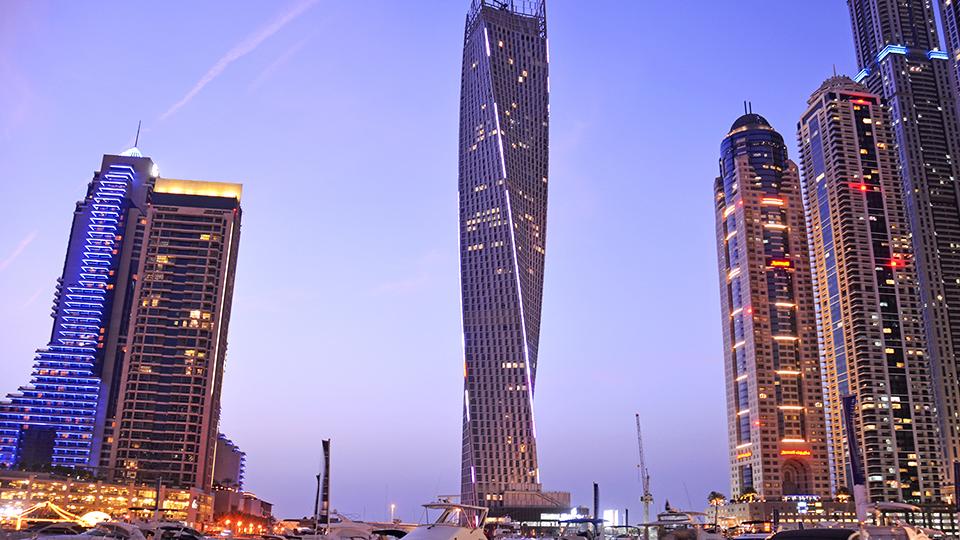Cayan Tower is a is a 306-metre-tall (1,004 ft), 75-story skyscraper in Dubai, United Arab Emirates, that was initially known as Infinity Tower. At its opening in 2013 the tower was the world’s tallest building that had a 90 degree turn, a record it held until 2015.
Skidmore, Owings and Merril (SOM), an architectural firm famous for many significant supertall designs including the Burj Khalifa, designed the tower. The marvelous twisting form of the tower has been achieved by rotating each floor 1.2 degrees that results in a complete 90 degree twist from bottom to top. The supertall reinforced concrete structure rotates a hexagonal floor plate around a circular core—with the top offset 90 degrees from the base. The shift maximizes views for each of the 495 apartments. The lower portion of the tower is oriented toward the exciting waterfront promenade of Dubai Marina, while the upper floors are rotated to face the Gulf. The tower’s exterior is clad in pre-finished metal panels attached to cast-in-place concrete perimeter columns. The glass line is recessed, creating a deep sill that minimizes direct light penetration and shades both the building’s windows and exterior terraces. This has proved essential in Dubai’s punishing desert heat.
The tower’s structural system is a cast-in-place, high strength, reinforced concrete column superstructure. Deep concrete exterior columns clad in a metal skin with perforated screens help shield the building’s interior from the intense desert sun. The tower’s innovative shape required equally innovative engineering. The corner and interior columns twist as they ascend, but most of the perimeter columns have an identical shape and tilted relationship to the floor plate. They are simply shifted, a bit more than a single degree, from floor to floor, resulting in a standardized construction method typical to most concrete structures.
The shape of the tower is not only aesthetically unique but it serves a structural function as well. Its twisted shape greatly reduces wind forces on the tower and “confuses the wind” in a way that wind forces cannot organize themselves.

